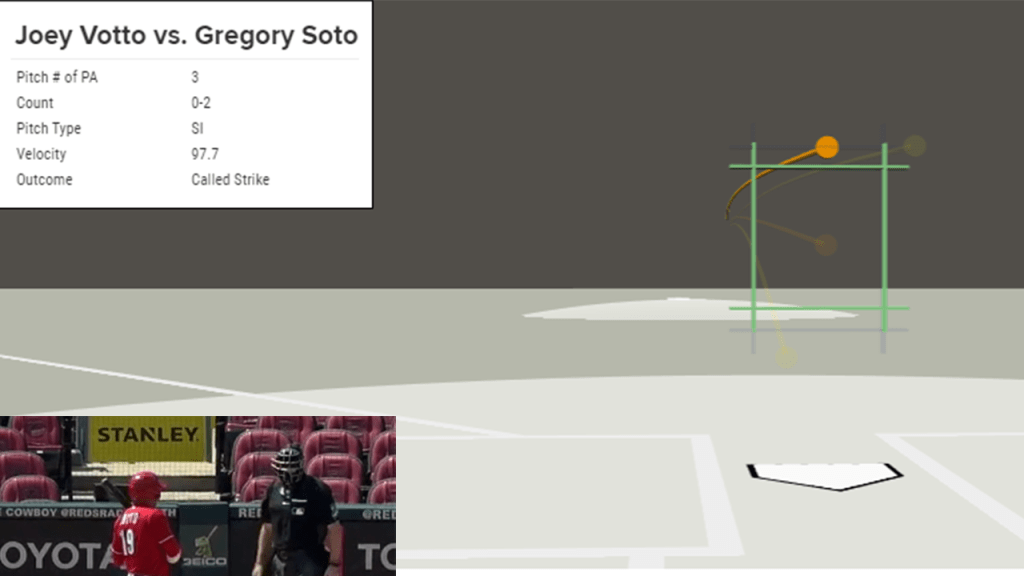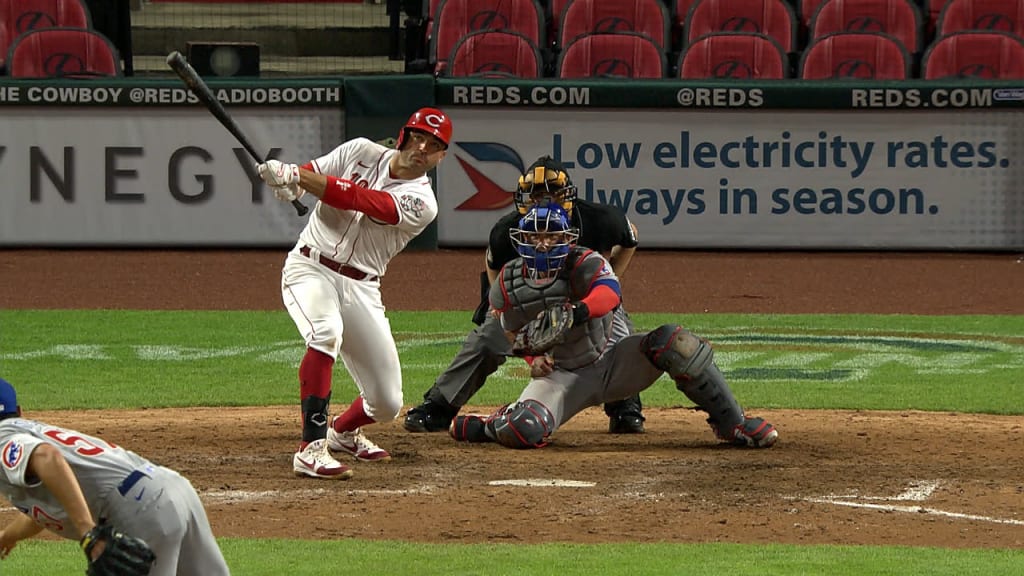Votto is not striking out this year
This browser does not support the video element.
Joey Votto isn't striking out anymore. That's a good thing. It's also a bad thing, maybe. Things can be more than one thing, you know?
Let's take a step back to 2019, when Votto set full-season career lows in batting average, on-base percentage and slugging percentage while adding a career-high strikeout rate and his lowest walk rate since his '08 rookie season. You know: All the important stuff.
Votto, to his credit, didn't take that lightly. “This year is an awful year for me,” he told MLB.com back in September. "There were long stretches where I was a liability in important parts of the season ... for sure, the worst year of my career.”
Flash-forward to the first week of the 2020 season: Votto, 37 in September, has struck out just once, in 28 plate appearances. (That's the lowest strikeout rate in the Majors.) He's hitting .304/.429/.565, and he's got as many home runs against lefties in 2020 as he did in all of 2019: one.
"If I'm competitive in two-strike counts and I put the ball in play and if I'm competitive against left-handed pitchers," Votto said to MLB.com's Mark Sheldon recently, "I'm going to have a very, very good year. So stay tuned.”
He is clearly doing all of those things, and he's finding success with them. So what's the problem? It might be what he's sacrificing to get it. It might be the quality of all that contact.
The good news: So much contact
OK, first, about that one strikeout: It was looking, so that means he hasn't struck out swinging even once yet. He's actually taken a swing and missed just twice so far this year, giving him baseball's lowest swinging-strike rate.
Lowest swinging-strike rate, 2020
5.4% -- Votto
7.1% -- Eric Sogard
7.5% -- Elvis Andrus
7.9% -- Yuli Gurriel
8.1% -- Luis Arraez
Minimum 25 swings, through Thursday's games
If you go back and check that one pitch he struck out on -- watching a 97.7 MPH fastball from Detroit's Gregory Soto go past on Sunday -- you can see why he wasn't exactly thrilled that he's got even the one whiff on his resume. We don't need the electronic strike zone, really. We just need Joey Votto's opinion.

It's not his longest stretch with just a single whiff, although it's coming close -- back in 2017, he went an incredible 42 consecutive plate appearances without a strikeout.
The bad news: Worse contact
OK, so ... how could any of that be bad? Let's let his Baseball Savant player page show you.
See those dark blue hard-hit and exit-velocity marks? That's the problem. Votto is making a lot more contact, but it's not necessarily better contact. His average exit velocity has dropped from 88.8 MPH to 79.8 MPH; his hard-hit rate has dropped from 38.2% to 18.2%, which is one of the lowest in baseball. His rate of weak contact has jumped from 2% to 9.1%. You get the idea.
It's not even that he's chasing bad pitches, because he's not. In fact, he's chasing fewer bad pitches, swinging at only 11% of non-strikes after chasing 19% last year. It's that he's making contact on pitches that you'd probably rather not make contact with -- 84% on pitches outside the zone, after an average of 60% in the preceding five years.
Because like everyone else, even the great Votto is not immune from the effects of hitting the wrong pitches. Looking back to the beginning of 2015, Votto has had far more success on pitches in the zone.
In zone contact
.311 BA / .525 SLG / 88.7 MPH exit velocity
Out of zone contact
.206 BA / .277 SLG / 80.7 MPH exit velocity
Votto, since 2015
But it's also that, in the early going, the in-zone contact quality hasn't been there either. Votto's got a 79.8 MPH exit velocity in the zone, after years of hovering in the 88-90 MPH range. (It is, again, extremely early. A week is not a season.)
So what's changed?
Well, let's go back to what Mark Sheldon wrote back in February:
"During the second half of last season, Votto made big adjustments and returned to an old approach that had worked for him in the past. Instead of a lower crouch in his batting stance and choking up on the bat, he stood more upright and held the bat near the knob."
Early in 2020, it seems like maybe that's not true. He's crouching and choking up again.
Now, let's be very clear about one thing. It's not as clear as "choking up equals more contact and less power," because Votto has tinkered with his approach often over the years, and he would sometimes choke up back in his best power-hitting years, too.
That said, there has been research conducted on this by Driveline Baseball, who noted earlier this year that "the normal grip gives you the biggest bang for your buck. It produced the highest average bat speed, which is important," and that "the choked-up grip can be pretty valuable depending on the situation ... while bat speed and power potential were low, adjustability and barrel control could be improved using this grip." (They detailed that the bat speed was about 2 MPH higher for a 'normal' grip over choked-up, though they were clear to note that an individual hitter's comfort must be taken into account."
Again, as we cannot state enough, the Reds have played only six games. We would probably not be taking much of this that seriously if this were April 5 in a full-length season, but we're already 10% of the way through the campaign and some of the advanced data is already useful. (Sluggers Jorge Soler and Eloy Jiménez lead in hard-hit rate, while light hitters like Brett Phillips and Jon Berti pull up the rear.)
All things being equal, you'd rather make contact than not make contact. The quality of that contact matters too, though. Votto's doing one of those things outstandingly. We'll have to see if the power behind it follows soon.
